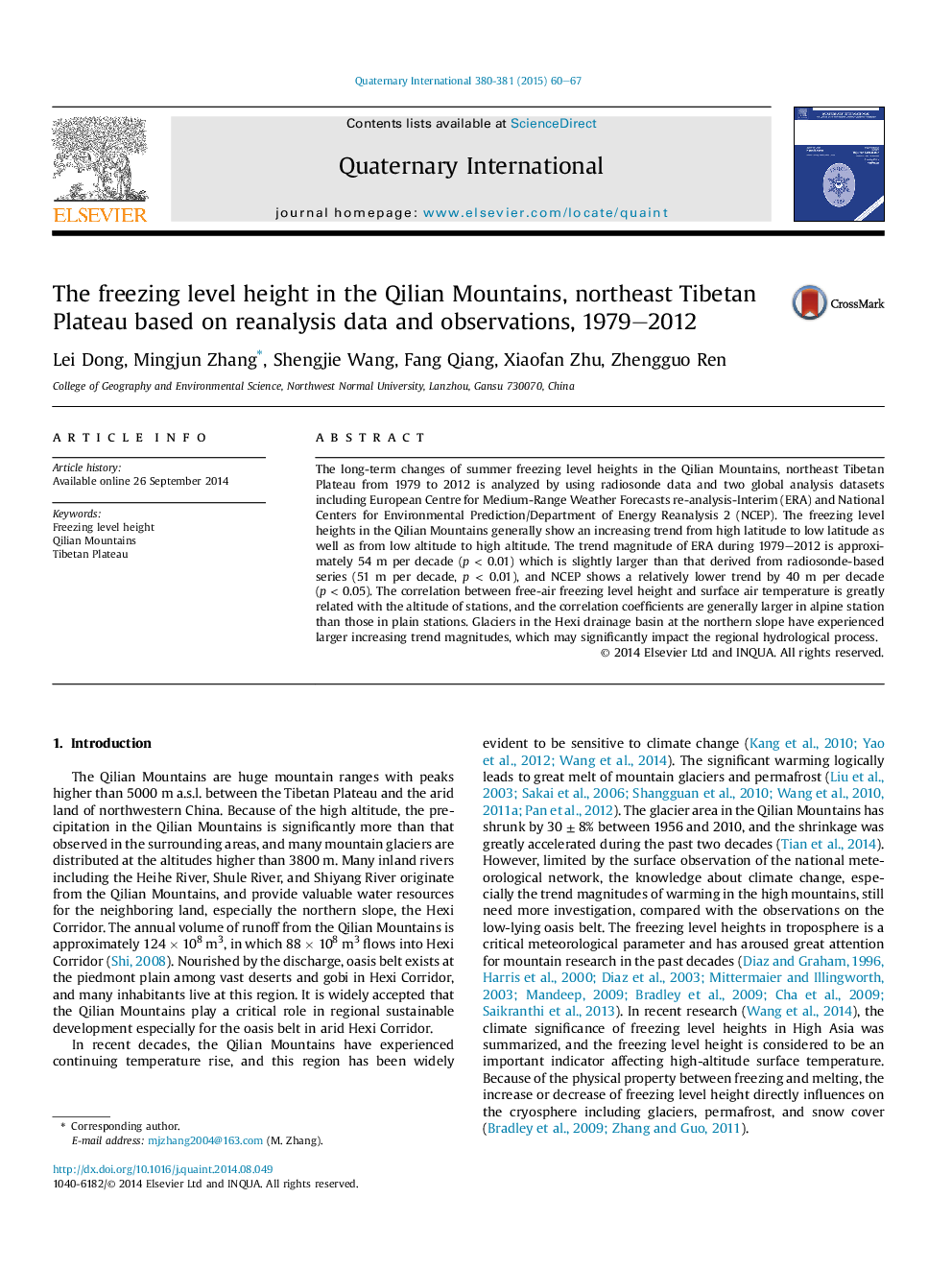| Article ID | Journal | Published Year | Pages | File Type |
|---|---|---|---|---|
| 7451458 | Quaternary International | 2015 | 8 Pages |
Abstract
The long-term changes of summer freezing level heights in the Qilian Mountains, northeast Tibetan Plateau from 1979 to 2012 is analyzed by using radiosonde data and two global analysis datasets including European Centre for Medium-Range Weather Forecasts re-analysis-Interim (ERA) and National Centers for Environmental Prediction/Department of Energy Reanalysis 2 (NCEP). The freezing level heights in the Qilian Mountains generally show an increasing trend from high latitude to low latitude as well as from low altitude to high altitude. The trend magnitude of ERA during 1979-2012 is approximately 54 m per decade (p < 0.01) which is slightly larger than that derived from radiosonde-based series (51 m per decade, p < 0.01), and NCEP shows a relatively lower trend by 40 m per decade (p < 0.05). The correlation between free-air freezing level height and surface air temperature is greatly related with the altitude of stations, and the correlation coefficients are generally larger in alpine station than those in plain stations. Glaciers in the Hexi drainage basin at the northern slope have experienced larger increasing trend magnitudes, which may significantly impact the regional hydrological process.
Keywords
Related Topics
Physical Sciences and Engineering
Earth and Planetary Sciences
Geology
Authors
Lei Dong, Mingjun Zhang, Shengjie Wang, Fang Qiang, Xiaofan Zhu, Zhengguo Ren,
